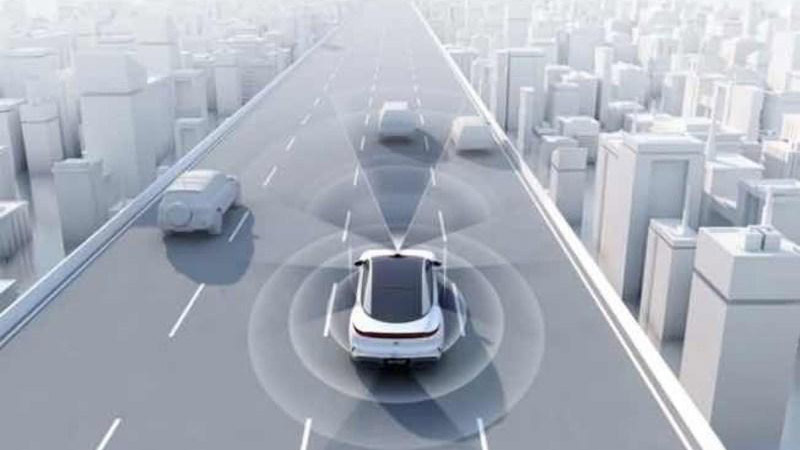LiDAR (Light Detection and Ranging) technology has become a cornerstone of autonomous vehicle systems, offering critical data for navigation, object detection, and environment mapping. As the automotive industry advances towards fully autonomous driving, LiDAR technology continues to evolve, promising significant improvements in performance, cost, and integration. This article explores the future trends in LiDAR technology and their implications for autonomous vehicles.

1. Advancements in LiDAR Technology
1.1. Solid-State LiDAR
One of the most anticipated advancements in LiDAR technology is the development of solid-state LiDAR systems. Unlike traditional mechanical LiDAR, which uses rotating mirrors to scan the environment, solid-state LiDAR relies on electronic components for scanning. This innovation eliminates moving parts, making the system more robust, compact, and cost-effective.
Solid-state LiDAR systems offer several benefits, including increased reliability, reduced maintenance, and lower production costs. These improvements will make LiDAR more accessible and affordable for mass-market autonomous vehicles.
1.2. Miniaturization and Integration
The trend towards miniaturization is expected to continue, with LiDAR systems becoming smaller and more integrated into vehicle designs. Advances in microelectromechanical systems (MEMS) and photonics are driving this trend, allowing for more compact and lightweight LiDAR sensors.
Miniaturized LiDAR systems can be integrated into various parts of the vehicle, such as the front grille, side mirrors, or roof. This integration enhances the vehicle’s aesthetics and reduces the impact on aerodynamics while maintaining high-performance sensing capabilities.
1.3. Enhanced Resolution and Range
Future LiDAR systems are expected to offer enhanced resolution and longer range capabilities. Higher resolution allows for more detailed environmental mapping, improving object detection and scene understanding. Increased range extends the vehicle’s ability to detect distant objects, providing more time for decision-making and collision avoidance.
These advancements will contribute to safer and more reliable autonomous driving, particularly in complex and high-speed scenarios.
2. Integration with Other Technologies
2.1. Sensor Fusion
The integration of LiDAR with other sensing technologies, such as cameras, radar, and ultrasonic sensors, will continue to evolve. Sensor fusion involves combining data from multiple sources to create a comprehensive understanding of the environment.
Advanced algorithms and machine learning models will play a crucial role in processing and interpreting fused sensor data. This approach enhances the vehicle’s perception system, improving object recognition, depth perception, and overall safety.
2.2. Connectivity and Communication
Future LiDAR systems will likely incorporate advanced connectivity features, such as Vehicle-to-Everything (V2X) communication. This connectivity allows the vehicle to exchange information with other vehicles, infrastructure, and cloud services.
V2X communication can enhance LiDAR’s effectiveness by providing additional context and data, such as traffic conditions, road hazards, and infrastructure status. This integration will support more informed decision-making and improved traffic management.
3. Cost Reduction and Accessibility
3.1. Economies of Scale
As LiDAR technology advances and becomes more widely adopted, economies of scale will drive down production costs. Increased competition and technological innovations will contribute to lower prices, making LiDAR more accessible for consumer vehicles.
Cost reduction will be a key factor in expanding the use of LiDAR in the automotive industry, enabling broader adoption of autonomous driving technology.
3.2. Open-Source and Collaborative Development
The trend towards open-source development and collaborative research is expected to accelerate advancements in LiDAR technology. Open-source initiatives and partnerships between industry players, academic institutions, and research organizations will drive innovation and reduce development costs.
Collaborative efforts will lead to the development of new technologies, standards, and best practices, further advancing the capabilities and affordability of LiDAR systems.
4. Emerging Applications
4.1. Smart Infrastructure and Urban Planning
LiDAR technology is increasingly being used in smart infrastructure and urban planning projects. High-resolution LiDAR data can be employed to create detailed 3D models of cities, monitor infrastructure conditions, and plan urban developments.
These applications will benefit from advancements in LiDAR technology, providing valuable insights for creating safer, more efficient, and sustainable urban environments.
4.2. Robotics and Automation
Beyond autonomous vehicles, LiDAR technology is being integrated into robotics and automation systems. LiDAR-equipped robots are used in various industries, including agriculture, logistics, and manufacturing, for tasks such as navigation, obstacle detection, and spatial mapping.
Future developments in LiDAR will enhance the capabilities of robotic systems, enabling more advanced and versatile automation solutions.
5. Regulatory and Safety Considerations
5.1. Standards and Certification
As LiDAR technology advances, establishing industry standards and certification processes will be essential for ensuring safety and reliability. Regulatory bodies and industry organizations will work to develop standards that address performance, safety, and interoperability.
Compliance with these standards will be crucial for the widespread adoption of LiDAR technology in autonomous vehicles and other applications.
5.2. Data Privacy and Security
The integration of LiDAR technology with connectivity and communication features will raise concerns about data privacy and security. Ensuring that data collected by LiDAR systems is protected and used responsibly will be important for maintaining public trust and regulatory compliance.
Conclusion
Future trends in LiDAR technology promise to revolutionize autonomous vehicles by offering advancements in solid-state systems, miniaturization, resolution, and range. Integration with other technologies, cost reduction, and emerging applications will further enhance the capabilities and accessibility of LiDAR. As the industry continues to evolve, these trends will drive innovation, improve safety, and pave the way for more widespread adoption of autonomous driving technology.


